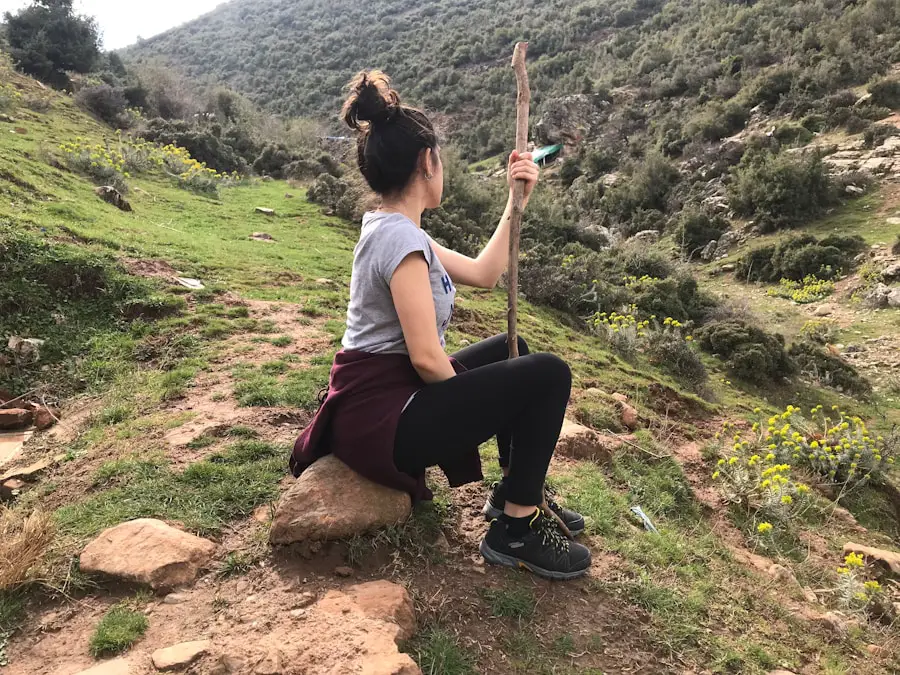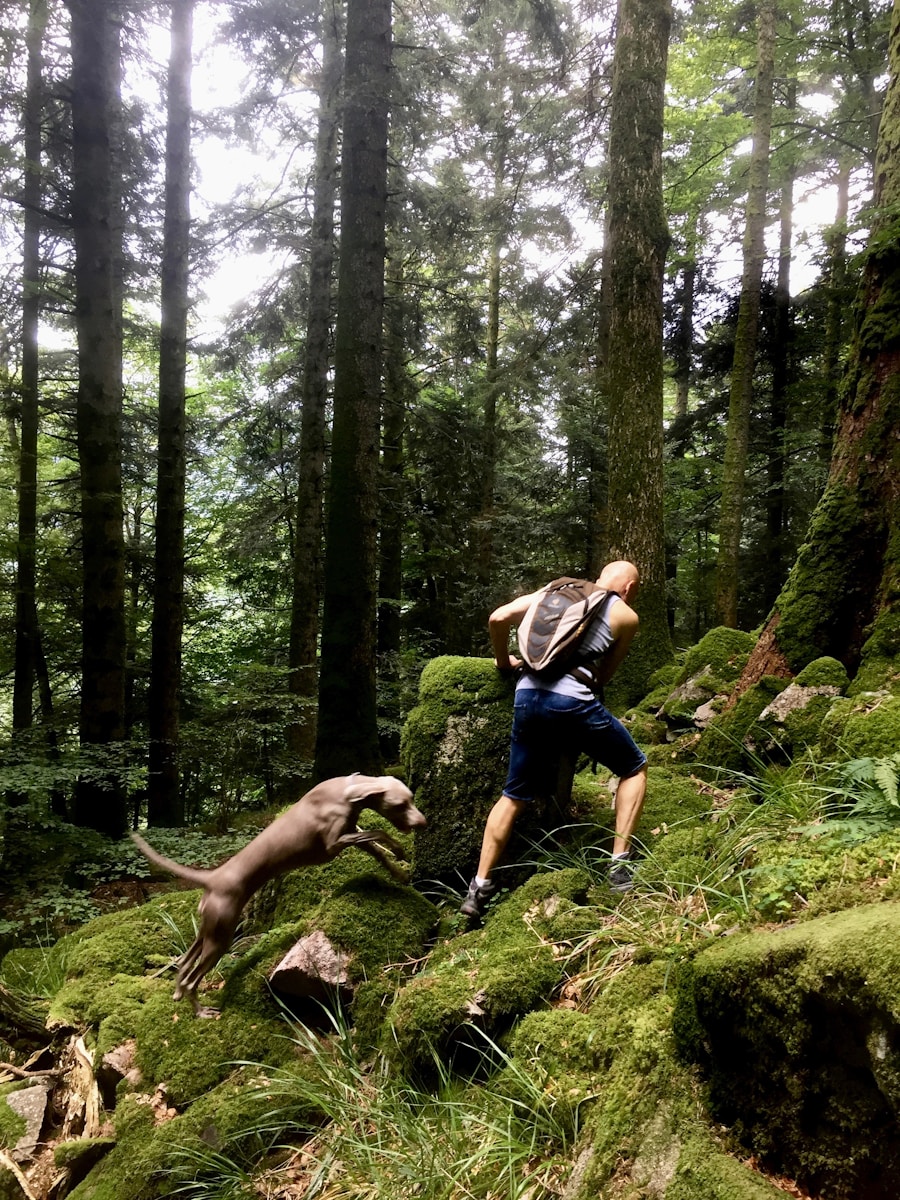Hiking is an exceptional way to enhance leg and core strength, offering a unique blend of cardiovascular exercise and resistance training. As you traverse various terrains, your legs engage in a dynamic workout that targets multiple muscle groups, including the quadriceps, hamstrings, calves, and glutes. The act of walking uphill or navigating rocky paths requires significant effort from these muscles, leading to increased strength and endurance over time.
Moreover, the core plays a crucial role in maintaining balance and stability during hikes. Engaging the core helps support the spine and pelvis, which is essential for efficient movement and injury prevention. In addition to building muscle strength, hiking also promotes functional fitness.
This type of fitness is vital for everyday activities, as it mimics the movements we perform in daily life. For instance, climbing steep inclines or descending uneven trails requires coordination and strength that translates well into other physical activities. Furthermore, hiking can improve overall body composition by burning calories and promoting fat loss, which can enhance muscle definition in the legs and core.
The combination of strength training and cardiovascular benefits makes hiking a holistic workout that contributes to overall health and fitness.
Key Takeaways
- Hiking is an excellent way to strengthen your legs and core muscles, leading to improved balance, stability, and overall strength.
- Choosing varied terrain such as inclines, declines, and uneven surfaces can maximize the leg and core workout benefits of hiking.
- Essential gear for hiking includes supportive footwear, trekking poles, and a well-fitted backpack to enhance leg and core engagement.
- Techniques such as engaging your core, taking shorter strides, and using proper posture can help maximize the leg and core workout while hiking.
- Preparing your body with strength training, flexibility exercises, and gradual increases in hiking intensity can help prevent injury and build leg and core strength.
Choosing the Right Hiking Terrain for Leg and Core Workouts
Selecting the appropriate hiking terrain is crucial for maximizing leg and core workouts. Different types of trails offer varying levels of difficulty and engagement for these muscle groups. For instance, steep inclines are particularly effective for building leg strength, as they require more effort from the quadriceps and glutes.
Trails with a mix of elevation changes can also provide an excellent workout, as they challenge the body to adapt to different gradients. Hiking on uneven surfaces, such as rocky or root-laden paths, further engages stabilizing muscles in the legs and core, enhancing overall strength. In contrast, flat trails may not provide the same level of challenge for leg and core development.
While they can still be enjoyable and beneficial for cardiovascular health, incorporating hills or varied terrain into your hiking routine is essential for those looking to build strength. Additionally, consider the length of the hike; longer treks can lead to increased endurance in the legs and core, as sustained activity forces these muscles to work harder over time. By strategically choosing trails that offer elevation changes and varied surfaces, hikers can create a more effective workout that targets leg and core strength.
Essential Hiking Gear for Strengthening Your Legs and Core

The right gear can significantly enhance your hiking experience while also contributing to leg and core strength development. Proper footwear is paramount; investing in high-quality hiking boots or shoes with good ankle support can prevent injuries and provide stability on uneven terrain. Look for shoes with a firm sole that offers traction, as this will help you maintain balance while engaging your leg muscles effectively.
Additionally, consider using trekking poles. These can help distribute weight more evenly across your body, allowing you to engage your core while providing support during steep climbs or descents. Clothing also plays a vital role in your hiking performance.
Opt for moisture-wicking fabrics that allow for breathability and comfort during long hikes. Wearing supportive compression garments can enhance blood flow to the muscles, potentially improving performance and recovery. A well-fitted backpack is another essential piece of gear; it should distribute weight evenly across your back to prevent strain on your core and legs.
When loaded correctly, a backpack can add resistance to your hike, further challenging your muscles and promoting strength gains.
Techniques for Maximizing Leg and Core Engagement While Hiking
| Technique | Engagement Level |
|---|---|
| Uphill Hiking | High |
| Using Trekking Poles | Medium |
| Engaging Core Muscles | High |
| Stepping Over Obstacles | High |
| Walking on Uneven Terrain | High |
To maximize leg and core engagement during hikes, specific techniques can be employed that focus on form and movement patterns. One effective method is to consciously engage your core while walking. This involves tightening your abdominal muscles as you hike, which not only supports your spine but also enhances stability on uneven terrain.
Additionally, focusing on your posture—keeping your back straight and shoulders relaxed—can help maintain proper alignment, allowing for more efficient movement and reduced risk of injury. Another technique involves varying your stride length and pace throughout the hike. Shortening your stride can increase the intensity of your workout by forcing your legs to work harder with each step.
Conversely, lengthening your stride on downhill sections can engage different muscle groups in the legs while also challenging your balance. Incorporating side steps or lateral movements when navigating trails can further activate the hip abductors and adductors, which are crucial for overall leg strength. By consciously applying these techniques during hikes, you can significantly enhance the effectiveness of your workout.
Preparing Your Body for Hiking to Avoid Injury and Build Strength
Preparation is key to enjoying a successful hiking experience while minimizing the risk of injury. Before embarking on a hike, it’s essential to warm up properly to prepare your muscles for the demands of the trail. Dynamic stretches such as leg swings, arm circles, and torso twists can increase blood flow to the muscles and improve flexibility.
Additionally, performing exercises that mimic hiking movements—such as squats or lunges—can activate the relevant muscle groups and enhance performance. Building a solid foundation of strength through regular training is also crucial for injury prevention. Incorporating strength training exercises targeting the legs and core into your routine can prepare your body for the rigors of hiking.
Exercises like deadlifts, squats, planks, and bridges are particularly effective at developing the necessary strength and stability required for hiking. Gradually increasing the intensity of these workouts will help build endurance over time, making it easier to tackle more challenging hikes without risking injury.
Incorporating Interval Training and Resistance Exercises into Your Hiking Routine

Improved Aerobic Capacity and Leg Strength
This method not only improves aerobic capacity but also engages the leg muscles more intensely during uphill sprints.
Incorporating Resistance Exercises
In addition to interval training, incorporating resistance exercises into your hiking routine can further boost leg and core strength. For example, carrying a weighted backpack or using ankle weights during hikes adds resistance that challenges your muscles more than bodyweight alone. You might also consider stopping at intervals along the trail to perform bodyweight exercises such as squats or lunges before continuing your hike.
Breaking Up the Monotony
This approach not only breaks up the monotony of walking but also provides an opportunity to engage different muscle groups actively.
Nutrition and Hydration Tips for Hiking to Support Leg and Core Strength
Proper nutrition plays a vital role in supporting leg and core strength during hiking activities. Consuming a balanced diet rich in carbohydrates, proteins, and healthy fats is essential for fueling your body before, during, and after hikes. Carbohydrates provide quick energy sources necessary for sustained activity, while protein aids in muscle repair and recovery post-hike.
Foods such as whole grains, lean meats, nuts, seeds, fruits, and vegetables should be staples in a hiker’s diet. Hydration is equally important; maintaining fluid balance helps prevent fatigue and cramping during hikes. It’s advisable to drink water regularly throughout the day leading up to a hike rather than waiting until you feel thirsty.
During longer hikes, consider carrying electrolyte-rich drinks or snacks that replenish lost minerals through sweat. This will help sustain energy levels while supporting optimal muscle function in both the legs and core.
Recovery and Stretching Strategies for Hikers to Maintain Leg and Core Health
Post-hike recovery is crucial for maintaining leg and core health after strenuous activity. Engaging in proper stretching routines can alleviate muscle tightness and promote flexibility in these areas. Focus on stretches that target major muscle groups used during hiking—such as hamstring stretches, quadriceps stretches, calf stretches, and hip flexor stretches—to ensure comprehensive recovery.
Incorporating foam rolling into your post-hike routine can also be beneficial for muscle recovery. Foam rolling helps release tension in tight muscles by increasing blood flow and promoting relaxation in the fascia surrounding them. Additionally, allowing adequate rest between hikes is essential for muscle repair; this ensures that you return stronger for future outings while minimizing the risk of overuse injuries.
By prioritizing recovery strategies alongside regular hiking practices, you can maintain optimal leg and core health over time.
Hiking is a fantastic way to stay active and engage multiple muscle groups in the body. According to a recent article on TakeTravelInfo, hiking works muscles such as the quadriceps, hamstrings, glutes, calves, and core. These muscles are essential for maintaining balance, stability, and endurance while trekking through various terrains. To enhance your hiking experience, consider investing in a pair of compact binoculars for spotting wildlife along the trail source.
Love travel? Join Our Facebook Community For More Tips.
FAQs
What muscles does hiking work?
Hiking works a variety of muscles including the quadriceps, hamstrings, glutes, calves, and hip flexors. It also engages the core muscles, back muscles, and upper body muscles such as the shoulders and arms.
How does hiking work the quadriceps?
Hiking involves a lot of uphill walking, which requires the quadriceps to work hard to lift the body up and forward. The quadriceps are responsible for extending the knee and are heavily engaged during uphill hiking.
What role do the hamstrings play in hiking?
The hamstrings are responsible for flexing the knee and extending the hip, which are both important movements during hiking. They work to stabilize the knee and support the body’s weight during descents.
How are the glutes engaged during hiking?
The glutes, particularly the gluteus maximus, are heavily engaged during hiking, especially when climbing uphill. They are responsible for hip extension and play a crucial role in propelling the body forward.
What impact does hiking have on the calves?
Hiking involves a lot of walking on uneven terrain, which requires the calves to work hard to stabilize the ankles and provide propulsion. The calf muscles, including the gastrocnemius and soleus, are heavily engaged during hiking.
How does hiking engage the core muscles?
Hiking requires a lot of balance and stability, which engages the core muscles including the abdominals, obliques, and lower back muscles. These muscles work to stabilize the body and maintain good posture during hiking.
What upper body muscles are engaged during hiking?
While hiking primarily targets the lower body muscles, the upper body also plays a role in maintaining balance and stability. The shoulders, arms, and upper back muscles are engaged to a lesser extent, especially when using trekking poles or carrying a backpack.
